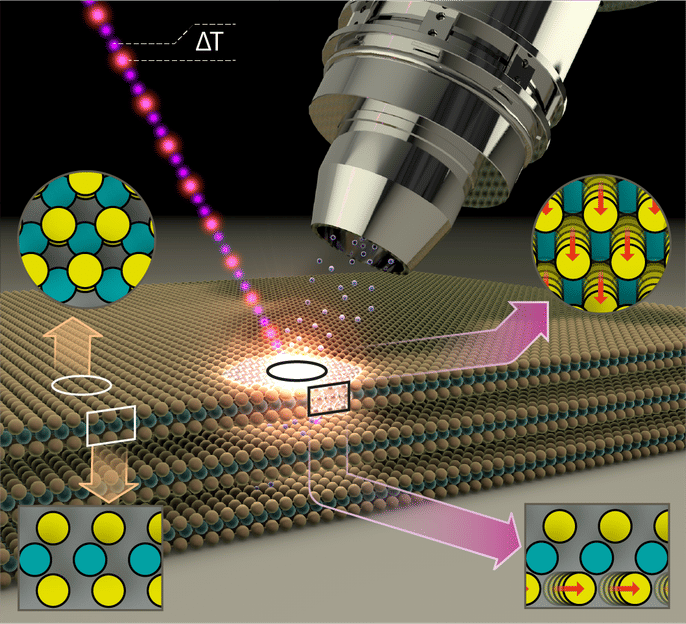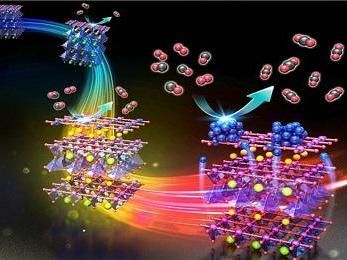How light activates MoS2 layers to become catalysts
Advertisement
Thin films of molybdenum and sulfur belong to a class of materials that can be considered for use as photocatalysts. Inexpensive catalysts such as these are needed to produce hydrogen as a fuel using solar energy. However, they are still not very efficient as catalysts. A new instrument at the Helmholtz-Berlin Zentrum’s BESSY II now shows how a light pulse alters the surface properties of the thin film and activates the material as a catalyst.

A new instrument at BESSY II can be used to study molybdenum-sulfide thin films that are of interest as catalysts for solar hydrogen production. A light pulse triggers a phase transition from the semiconducting to the metallic phase and thus enhances the catalytic activity.
© Martin Künsting /HZB
MoS2 thin films of superposed alternating layers of molybdenum and sulfur atoms form a two-dimensional semiconducting surface. However, even a surprisingly low-intensity blue light pulse is enough to alter the properties of the surface and make it metallic. This has now been demonstrated by a team at BESSY II.
Enhanced catalytic activity in the metallic phase
The exciting thing is that the MoS2 layers in this metallic phase are also particularly active catalytically. They can then be employed, for example, as catalysts for splitting of water into hydrogen and oxygen. As inexpensive catalysts, they could facilitate the production of hydrogen – an energy carrier whose combustion produces no CO2, only water.
New at BESSY II: SurfaceDynamics@FemtoSpeX
Physicist Dr. Nomi Sorgenfrei and her team have constructed a new instrument at BESSY II to precisely measure the changes in samples using temporally-resolved electron spectroscopy for chemical analysis (trESCA) when irradiating the samples with low-intensity, ultra-short light pulses. These light pulses are generated at BESSY II using femtosecond time-slicing (femtoslicing) and are therefore both low intensity and extremely short duration. The new instrument, named SurfaceDynamics@FemtoSpeX, can also rapidly obtain meaningful measurements of electron energies, surface chemistry, and transient alterations using these low-intensity light pulses.
Observation of the phase transition
Analysis of the empirical data showed that the light pulse leads to a transient accumulation of charge at the surface of the sample, triggering the phase transition at the surface from a semiconducting to a metallic state.
“This phenomenon should also occur in other representatives of this class of materials, the p-doped semiconducting dichalcogenides, so it opens up possibilities of influencing functionality and catalytic activity in a deliberate way”, Sorgenfrei explains.
Original publication
Other news from the department science
Most read news
More news from our other portals
See the theme worlds for related content
Topic World Spectroscopy
Investigation with spectroscopy gives us unique insights into the composition and structure of materials. From UV-Vis spectroscopy to infrared and Raman spectroscopy to fluorescence and atomic absorption spectroscopy, spectroscopy offers us a wide range of analytical techniques to precisely characterize substances. Immerse yourself in the fascinating world of spectroscopy!

Topic World Spectroscopy
Investigation with spectroscopy gives us unique insights into the composition and structure of materials. From UV-Vis spectroscopy to infrared and Raman spectroscopy to fluorescence and atomic absorption spectroscopy, spectroscopy offers us a wide range of analytical techniques to precisely characterize substances. Immerse yourself in the fascinating world of spectroscopy!





























































